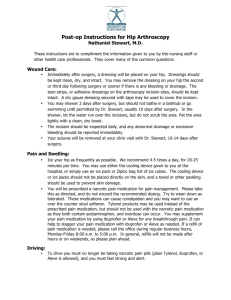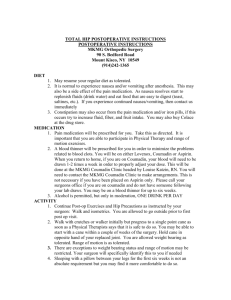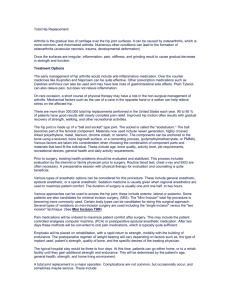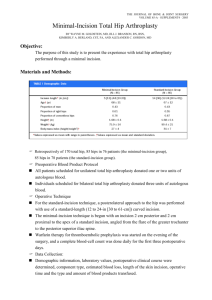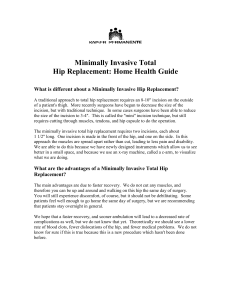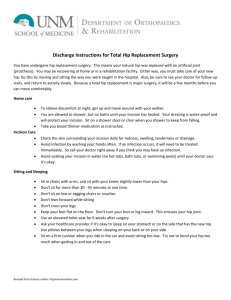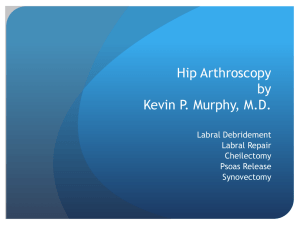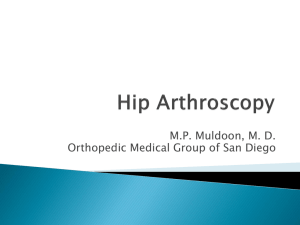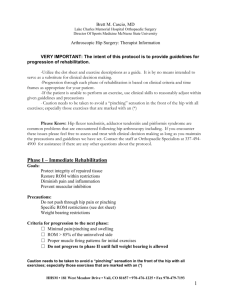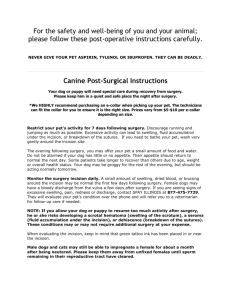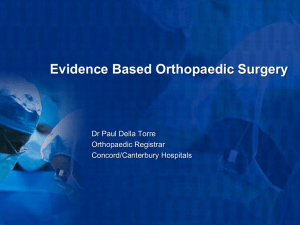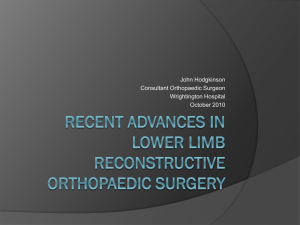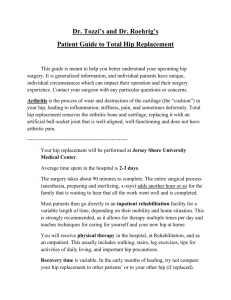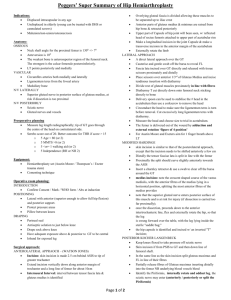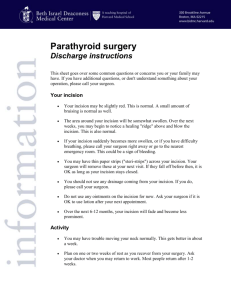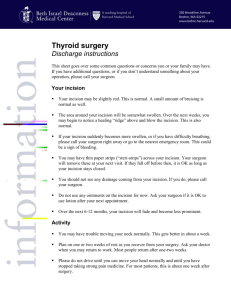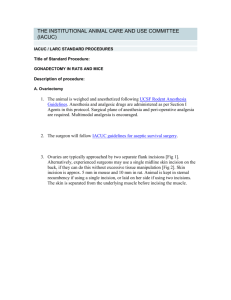After Surgery Care and Information
advertisement
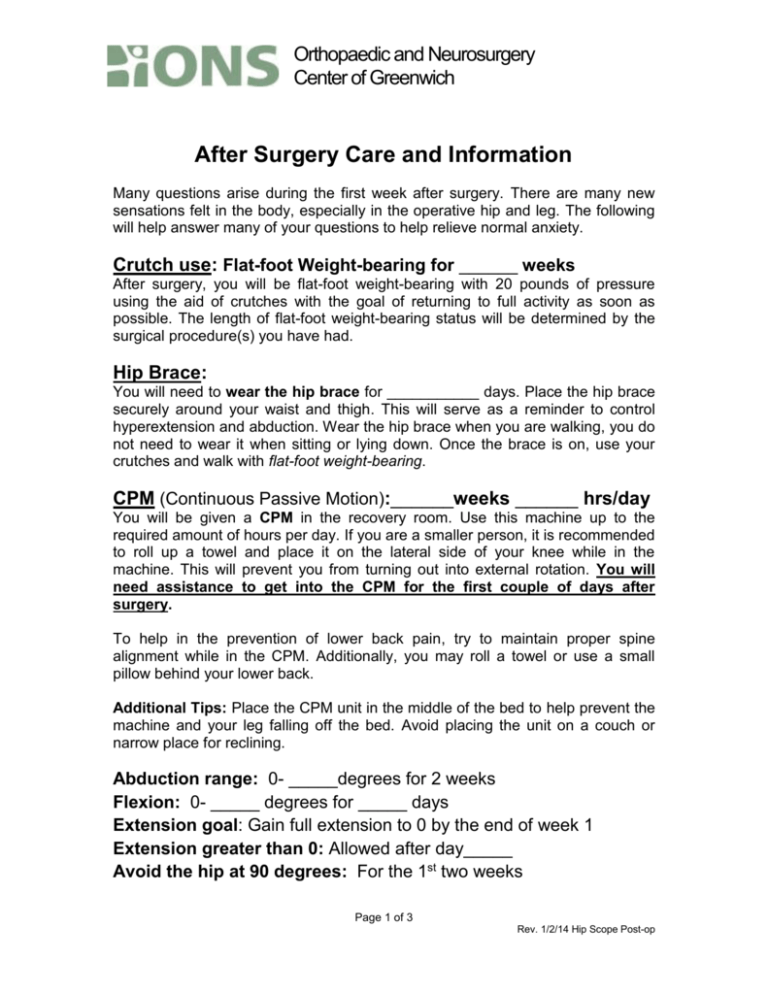
Orthopaedic and Neurosurgery Center of Greenwich After Surgery Care and Information Many questions arise during the first week after surgery. There are many new sensations felt in the body, especially in the operative hip and leg. The following will help answer many of your questions to help relieve normal anxiety. Crutch use: Flat-foot Weight-bearing for ______ weeks After surgery, you will be flat-foot weight-bearing with 20 pounds of pressure using the aid of crutches with the goal of returning to full activity as soon as possible. The length of flat-foot weight-bearing status will be determined by the surgical procedure(s) you have had. Hip Brace: You will need to wear the hip brace for ___________ days. Place the hip brace securely around your waist and thigh. This will serve as a reminder to control hyperextension and abduction. Wear the hip brace when you are walking, you do not need to wear it when sitting or lying down. Once the brace is on, use your crutches and walk with flat-foot weight-bearing. CPM (Continuous Passive Motion):______weeks ______ hrs/day You will be given a CPM in the recovery room. Use this machine up to the required amount of hours per day. If you are a smaller person, it is recommended to roll up a towel and place it on the lateral side of your knee while in the machine. This will prevent you from turning out into external rotation. You will need assistance to get into the CPM for the first couple of days after surgery. To help in the prevention of lower back pain, try to maintain proper spine alignment while in the CPM. Additionally, you may roll a towel or use a small pillow behind your lower back. Additional Tips: Place the CPM unit in the middle of the bed to help prevent the machine and your leg falling off the bed. Avoid placing the unit on a couch or narrow place for reclining. Abduction range: 0- _____degrees for 2 weeks Flexion: 0- _____ degrees for _____ days Extension goal: Gain full extension to 0 by the end of week 1 Extension greater than 0: Allowed after day_____ Avoid the hip at 90 degrees: For the 1st two weeks Page 1 of 3 Rev. 1/2/14 Hip Scope Post-op Orthopaedic and Neurosurgery Center of Greenwich Anti-rotational Boots: When you are not in the CPM machine, either sleeping or lying down, you will need to be in anti-rotational boot and bolster. These prevent you from rotating out into external rotation to prevent extra stressors on your capsule. If you choose to sleep on your side, please sleep only on the operative side. Use the Anti-rotational boots for ______ days Tips on avoiding hip flexion at 90 degrees for the first two weeks: use a higher chair, a recliner chair, or while sitting you can slouch forward or backward. Please have the physical therapist do all circumduction exercises in 70 degrees of flexion. Pain Control: A prescription for pain medication will be given to you upon discharge from the hospital. Pain medication should be taken as prescribed until your pain is under control. It helps if you take your pain medication thirtyminutes before therapy if you are experiencing any pain. Applying ice and elevating the leg as much as possible will help with the pain. Try to relax and allow other people to help you out as much as possible during the first week. Incision Care: The original dressing should be removed 24 hours after surgery. Apply an op-site, water-proof dressing over the incision site until it has stopped draining. After drainage has stopped, apply band aids over the incisions. Repeat daily or as needed throughout the day if the op-sites or band aids become soiled or wet. Do not put any ointments or lotions over the incisions. ** Do not allow pets to sit on your lap or sleep in your bed for at least 6 weeks following surgery. Pets may harbor fleas, mites or other organisms that may cause a wound infection! Showering: Resume regular showers after the original dressing has been removed. When taking a shower, if the wound is still draining, please keep an op-site over the incision site. After drainage has stopped, you may allow water to run over the incision as long as the wound is covered with band aids. After showering, pat the incision area dry. Sutures: Sutres are in place on your skin. They will need to be removed at your post-op visit. Steri-strips should stay on incisions for 14 days. Page 2 of 3 Rev. 1/2/14 Hip Scope Post-op Orthopaedic and Neurosurgery Center of Greenwich Returning to work or school: You may return to work the next day or two after surgery if pain is tolerable. You must take the time to honor your commitments to physical therapy and office visits. Returning to heavy labor will be determined by your progression through physical therapy and the cartilage condition on the acetabulum and femoral head. Risk: There are several risks to any surgery that must be taken into account… Infection: is decreased with a sterile operating environment and antibiotics. Also, careful handling of the incision sites following surgery reduces the risk of infection. DVT: (deep vein thrombosis, blood clot) is decreased by instituting early motion (CPM), mechanical means (foot pumps) and medication. Following the pre-operative and post-operative instructions will reduce the risk of deep vein clots. Pain: with any surgical procedure there is a potential complication of pain. Medication, ice, rest, compression, elevation and therapy reduce postoperative pain. Numbness: with hip arthroscopy, there is a small chance of brief numbness in the genitalia region post operatively. You may also experience some numbness of the upper-outer portion of the thigh on the operative leg after surgery. This is due to the closeness of the lateral femoral cutaneous nerve to the surgical area. This nerve may be stretched or bruised during the procedure. This is normal and the numbness will resolve over time. Call our office (203) 869-1145 or the on call doctor IMMEDIATELY if any of the following occur: A. Fever, chills, or sweats B. Redness and warmth around the incision(s), non-clear drainage from the incision, or increased pain in or around the incision. C. Calf swelling, redness, pain or warmth D. Chest pain, difficulty of breathing, or cough Patient: _________________________________________________ Date: ___________ Physician: _______________________________________________ Page 3 of 3 Rev. 1/2/14 Hip Scope Post-op
